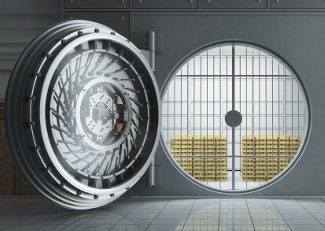Rising Interest Rates Will Cause Economic Collapse
When the economy collapsed in 2008, it left millions of Americans broke, jobless, and with their savings completely wiped out. For the last few years, the lower unemployment rate and rising stock markets made it look as though things were back on the right track and that the economy was back on the road to prosperity. But looks can be deceiving. I see something else on the horizon: another economic crash, just around the corner—caused by the Federal Reserve System and its monetary policy. I’m not the only one, either. There are plenty of economists and financial experts who agree with me.
The Fed and Inflation
From the time I was first elected to Congress, I’ve been critical of the Federal Reserve and have continued to call for its abolition. The Fed’s inflationary monetary policy encourages debt and penalizes savings, promoting irresponsible financial behavior. Its bailouts of large financial firms and its agreements with foreign central banks have made it the 800-pound gorilla of world financial markets, a role it was never intended to play.
In free markets, savings and investment are the way to create economic growth. The Fed creates the illusion of growth by creating money and credit out of thin air, artificially decreasing interest rates and leading to unsustainable economic bubbles. When the bubbles burst, unsustainable debts need to be liquidated and malinvested resources need to be put to more productive use. But the Fed responds to the bursting bubble by creating even more money and credit, causing another bubble and engaging in a vicious cycle that ensures another recession in the future.
The Interest Rate in 2017
As a response to the last financial crisis, the Federal Reserve lowered its target interest rate in December of 2008 to nearly zero and kept it there for seven years. In 2015, they bumped it up to a range of 0.25-0.5% and a year later, in December of 2016, they raised it another quarter of a percentage point. In March of this year the Fed raised rates again, to 0.75-1.00%, and there is speculation that three more rate hikes are coming this year. But is the economy really strong enough to withstand these increased interest rates?
While it’s certainly high time to get back to normalized interest rates, after nearly a decade of near-zero rates the economy has gotten so used to the Fed’s easy money that returning to market discipline will expose the economy’s rotten fundamentals. Bad debts that weren’t liquidated after the last crisis were kept afloat with the Fed’s newly-created cheap money. New debts were taken on at the low-interest rates brought about by the Fed’s policies. But as interest rates rise in the coming months, those debts will be found to be unsustainable and we will see a repeat of 2008, but worse.
Protecting Yourself
The bad news is that there’s not really much we can do to stop the impending economic crisis. The Federal Reserve will make its decisions and we will have to suffer the consequences. The good news is that we know that a collapse is around the corner and we can do all we can to protect ourselves from the fallout. What’s the best way to do that?
I have always favored gold, both as money and as an investment. Gold is the ultimate money, the ultimate safe asset, favored by millions of people over thousands of years. There’s a reason central banks still hold on to their gold, because they know that when paper money and paper assets go bad, there’s nothing safer than having gold in your vault.
Gold maintains its purchasing power over time, and it even tends to go up in value when markets are crashing. Gold is the perfect safe haven to protect yourself against an economic collapse. By putting a portion of your savings into physical gold, you’ll have a cushion to protect yourself when your stocks or bonds lose their value. Don’t wait until the crash comes and you lose everything. Add a safe haven such as gold or silver to your portfolio before it’s too late.

